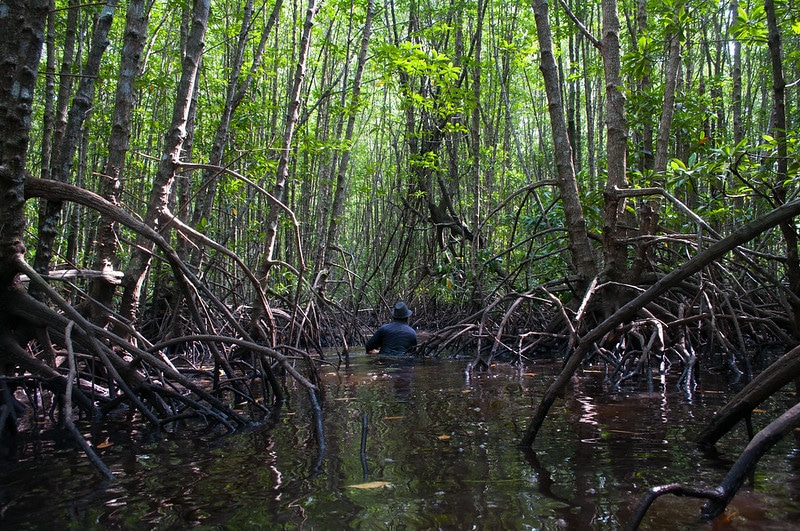Mangroves populations have been diminishing every year due to coastal development, conversion for aquaculture, and overexploitation, with an estimated quarter of the existing population being lost within the last four decades. Here are 7 facts about these incredibly unique and spectacular trees and why it’s so important for us to protect and conserve them.
—
7 Fascinating Facts About Mangroves
1. Mangroves Are Some of the Most Important Carbon Sinks on the Planet
Mangrove trees are instrumental in mitigating the effects of climate change and have the capacity to absorb and store carbon dioxide, effectively stopping greenhouse gasses from entering the atmosphere. They have been recorded to absorb almost 10 times as much carbon dioxide from the atmosphere than terrestrial forests. However due to deforestation, the development of shrimp farms along the coasts and other forms of aquaculture, it’s been estimated that the planet lost at least 35% of all mangrove forests between 1980 and 2000.
2. Mangroves Act As Coastal Defence Against Floods and Tsunami
Mangrove forests are incredibly effective in rapidly reducing strong wind and waves as they pass through, and act as a powerful coastal defence against major storms and hurricanes as well as the impact of flooding. Wide areas of mangroves can help reduce the height of tsunami as it breaches the coast, reducing the potential loss of life and property. Additionally, the dense roots of these trees help bind and build soils, which slow down water flows and reduce erosion and sea level rises.
3. Mangroves Can Help Mitigate Coral Bleaching
One of the most devastating effects of the climate crisis is coral bleaching, where warming temperatures of the ocean severely impacts and very often, permanently damages the health of coral reefs and its ecosystems. However, healthy mangrove forests have the capability of providing shelter for coral species at risk from coral bleaching, as well as reducing ocean acidification.
You might also like: The True Value of Mangroves
4. Mangroves are Found in Salty Water
The species can be found along shores, rivers and coastlines in 118 tropical and subtropical countries, and they live in water up to 100 times saltier then most other plants are able to tolerate. Most of these trees live and thrive on muddy soil and can filter out as much as 90% of all the salt in seawater when it enters their roots. Some species can even excrete the salt, which covers the surface of their leaves.
5. Mangroves Contribute Back to the Economy and Society
Aside from its environmental values, it’s been estimated that mangroves contribute about USD $33-58 thousand per hectare every year to the national economies of developing countries, a majority of which comes from fisheries and wood. The loss of these species can have a significant impact on national and global economies.
6. Mangroves Cannot Be Replanted Once Deforested or Destroyed
Mangroves act as a powerful tool in holding the coastline in place. Deforestation of mangroves would lead to land erosion and degradation, and in its absence, coastlines would be reshaped by incoming tides and currents. As a result, it becomes increasingly difficult to replant mangrove back to their former shape and habitats.
7. Indonesia Boasts the Largest Ecosystem of Mangroves in the World
The country is home to the world’s largest population of mangroves, where mangrove trees cover more than 23,000 square km and are estimated to account for 23% of the world’s total. Some of which are also among the world’s tallest, reaching up to 144 feet. But Indonesia’s mangrove population is on its way down to make way for shrimp farms and palm oil plantations.
Featured image by: Flickr/Kate Evans/CIFOR
You might also like: Mangrove Forests Could Disappear by 2050 if Emissions Aren’t Cut


















